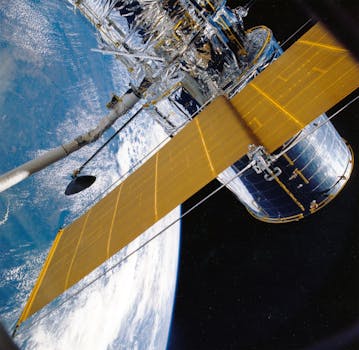
LEO Satellites: Revolutionizing Global Connectivity with WordPress
The Focus Keyword is LEO satellites, and it is essential to understand the significance of LEO satellites in today’s world. LEO satellites are a type of satellite that orbits the Earth at an altitude of around 160 to 2,000 kilometers. These satellites have been gaining popularity in recent years due to their ability to provide high-speed, low-latency communications and internet connectivity to remote and underserved areas.
One of the primary advantages of LEO satellites is their ability to offer global coverage, including areas where traditional fiber-optic cables and cell towers are not available. This makes them an attractive option for providing internet access to rural and remote communities, as well as for emergency response and disaster relief efforts. WordPress, being a popular content management system, can play a crucial role in disseminating information and providing connectivity to these areas.
How LEO Satellites Work
LEO satellites work by orbiting the Earth at a low altitude, which allows them to provide high-speed, low-latency communications. They are typically launched into orbit using a rocket and then deploy a network of small satellites that work together to provide coverage. Each satellite is equipped with a transceiver that sends and receives data, which is then transmitted to a ground station or directly to the user’s device.
The low altitude of LEO satellites also allows them to provide a higher signal strength and better connectivity compared to traditional geostationary satellites. This makes them ideal for applications such as real-time video streaming, online gaming, and virtual reality. WordPress can be used to create interactive and immersive experiences that take advantage of the low-latency connectivity provided by LEO satellites.
Applications of LEO Satellites
LEO satellites have a wide range of applications, including providing internet access to remote and underserved areas, emergency response and disaster relief, navigation, and Earth observation. They can also be used for scientific research, such as studying the Earth’s climate and monitoring weather patterns. WordPress can be used to create interactive dashboards and data visualizations that help scientists and researchers analyze and understand the data collected by LEO satellites.
In addition, LEO satellites can be used for commercial purposes, such as providing connectivity to IoT devices, enabling smart cities, and supporting e-commerce and online transactions. WordPress can be used to create e-commerce platforms and online marketplaces that take advantage of the low-latency connectivity provided by LEO satellites.
Challenges and Limitations
While LEO satellites offer many benefits, they also come with some challenges and limitations. One of the primary concerns is the high cost of launching and maintaining a network of LEO satellites. Additionally, the low altitude of LEO satellites means that they have a shorter lifespan compared to traditional geostationary satellites, which can remain in orbit for up to 15 years or more.
Another challenge facing LEO satellites is the issue of space debris. As the number of LEO satellites in orbit increases, so does the risk of collisions and the accumulation of space debris. This can pose a significant threat to the long-term sustainability of space exploration and development. WordPress can be used to raise awareness about the importance of responsible space development and the need for sustainable practices in the space industry.


